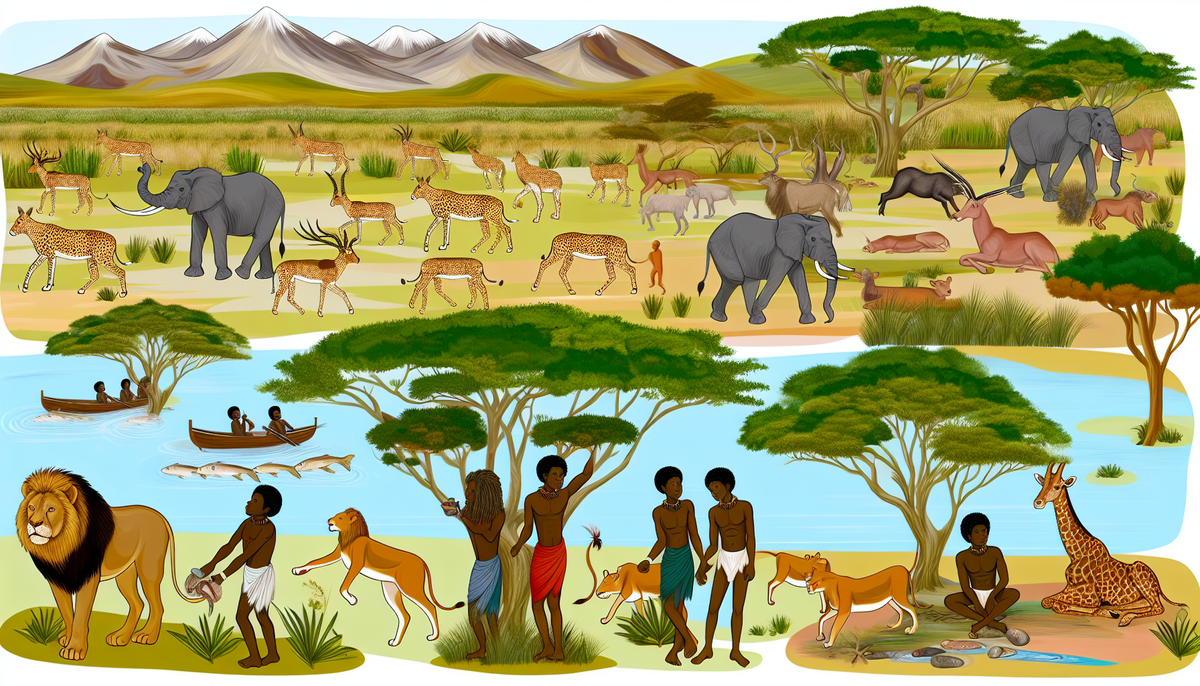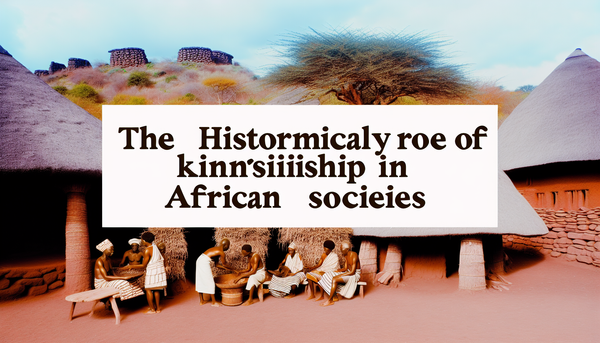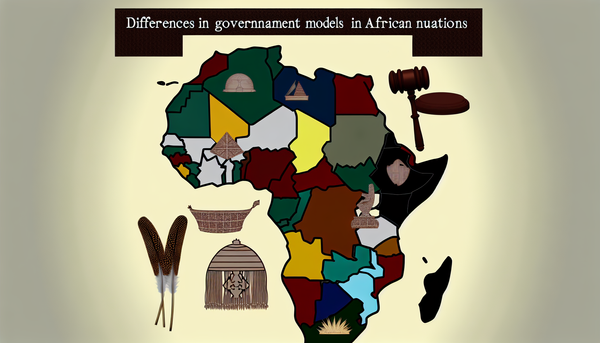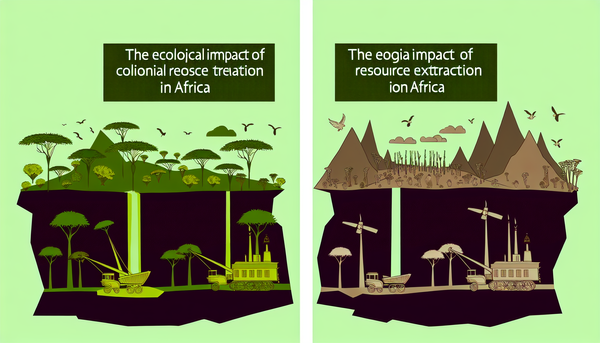Environmental Histories: How Nature Shaped Human Activity in Africa

Overview of Africa’s Geographical Diversity and its Impact on Early Human Settlements
Africa, often referred to as the cradle of humanity, boasts an extraordinary geographical diversity. This continent is characterized by vast deserts, lush rainforests, expansive savannas, and towering mountain ranges. Such variation in landscapes has been pivotal in shaping early human settlements and their subsequent development.
The Sahara Desert, for instance, served as both a barrier and a challenge, prompting early populations to adapt to arid conditions or migrate towards more hospitable areas. The availability of water sources was crucial, influencing where communities established themselves. River systems like the Nile and Congo provided fertile grounds for agriculture, enabling the rise of complex societies and trade networks.
In contrast, the tropical rainforests offered a bounty of resources, allowing hunter-gatherer communities to thrive. These environments fostered biodiversity, shaping dietary practices and cultural beliefs.
Additionally, mountainous regions created isolated pockets of habitation, leading to distinct linguistic and cultural identities. Thus, Africa's geographical variations not only determined the location of early human settlements but also influenced social structures, economies, and interactions among diverse groups. The interplay between environment and human activity laid the foundation for the continent's rich historical tapestry.
Adaptation Strategies to Arid Climates in the Sahara and Sub-Saharan Regions
The Sahara Desert and surrounding sub-Saharan regions present some of the harshest climates on the planet, characterized by extreme temperatures and scarce water resources. In response to these challenges, ancient populations developed ingenious adaptation strategies that reflect their resilience and resourcefulness.
One key strategy involved the use of nomadic pastoralism, allowing groups to herd livestock such as camels, goats, and sheep. This mobility enabled communities to follow seasonal grazing patterns and access scarce water sources. Nomadic tribes, such as the Tuareg and Fulani, mastered the art of navigating vast deserts, using traditional knowledge of the terrain to find sustenance.
Agricultural practices also evolved to accommodate arid conditions. Early farmers utilized techniques like dry farming, which involved planting drought-resistant crops such as millet and sorghum. They developed intricate irrigation systems, utilizing oases and seasonal floods to maximize their harvests.
Furthermore, communities engaged in trade across trans-Saharan routes, exchanging goods and knowledge with neighboring regions. This interconnectedness not only provided access to resources but also facilitated cultural exchange. Through these adaptive strategies, inhabitants of the Sahara and sub-Saharan regions not only survived but also cultivated rich cultural identities and social structures that thrived in challenging environments.
Rivers and Agriculture: The Foundations of Ancient Egyptian Civilizations
The Nile River, often regarded as the lifeblood of ancient Egypt, played a crucial role in the development of one of history's most remarkable civilizations. Flowing over 4,000 miles from southern Africa to the Mediterranean Sea, the Nile provided a consistent water source in an otherwise arid landscape. This reliable waterway facilitated agriculture by flooding annually, enriching the surrounding soil with nutrient-rich silt.
The regular inundation of the Nile allowed the ancient Egyptians to cultivate crops such as wheat, barley, and flax, significantly enhancing food production. This agricultural surplus was fundamental for sustaining large populations, enabling the growth of urban centers like Thebes and Memphis. As farming practices advanced, the development of tools and irrigation techniques further optimized crop yields, contributing to economic stability.
Moreover, the Nile facilitated trade and transportation, serving as a highway for the exchange of goods and ideas. The proximity to water enabled industries such as papyrus production, which was essential for record-keeping and communication.
Thus, the interplay between the Nile River and agricultural practices laid the foundational framework for social organization, economic prosperity, and cultural achievements, allowing ancient Egyptian civilization to flourish and leave a lasting legacy on human history.
Rainforest Ecosystems and Resource Use by Indigenous Communities
Africa's rainforests, primarily located in the Congo Basin, represent some of the world's most biodiverse ecosystems. These lush environments are home to diverse flora and fauna, which have profoundly shaped the lifestyles and cultures of indigenous communities that inhabit them. For these groups, the rainforest is not just a habitat but a source of sustenance, medicine, and cultural identity.
Indigenous communities skillfully utilize the abundant resources of the rainforest, practicing sustainable methods of extraction that ensure long-term survival. They gather fruits, nuts, and roots, while hunting and fishing in the rich waterways. Such practices are deeply intertwined with their cultural traditions and spiritual beliefs, as many species are considered sacred or are linked to ancestral stories.
Moreover, indigenous knowledge of the ecosystem informs their agricultural practices, often employing shifting cultivation techniques that preserve soil fertility and protect biodiversity. By rotating crops and allowing land to regenerate, these communities maintain harmony with their environment.
This relationship highlights a critical understanding of sustainability, emphasizing respect for natural resources. As modern pressures encroach upon these ecosystems, the traditional practices of indigenous communities serve as vital lessons in conservation and ecological stewardship, advocating for a balanced coexistence with nature in the face of change.
Mountains As Barriers and Corridors: Migration Patterns Across the Continent
Mountains have played a dual role in shaping migration patterns across Africa, serving both as formidable barriers and vital corridors. The continent's diverse topography includes prominent ranges such as the Atlas Mountains, the Ethiopian Highlands, and the Great Rift Mountain Range, each influencing human movement in profound ways.
As barriers, mountains often hindered the free flow of populations, creating isolated communities with distinct cultural and linguistic identities. For instance, the rugged terrain of the Drakensberg Mountains in Southern Africa limited interactions between different groups, fostering unique traditions and practices. This geographical isolation could also protect communities from invasions, allowing them to develop more autonomous social structures.
Conversely, mountain ranges also function as natural corridors for migration and trade. For instance, routes through the Ethiopian Highlands have historically facilitated movement between the highlands and lowlands, enabling the exchange of goods, ideas, and genetic diversity. Similarly, the Atlas Mountains provide passageways that connect the diverse ecosystems of North Africa, influencing trade routes and cultural exchanges.
Understanding mountains as both barriers and corridors illustrates their complex role in shaping human history. Their inherent duality has influenced not only migration patterns but also the rich tapestry of cultures that define Africa today.
The Role of the African Great Lakes in Regional Trade and Culture
The African Great Lakes—comprising Lake Victoria, Lake Tanganyika, Lake Malawi, and others—have played a pivotal role in regional trade and cultural exchange for centuries. These vast bodies of freshwater are not only vital sources of sustenance and irrigation but also serve as critical transport routes that facilitate commerce among surrounding communities.
Historically, the Great Lakes region has been a hub of trade, connecting various cultures and economies. Fishing communities, for instance, rely on the lakes’ rich biodiversity for food and livelihood, while also engaging in trade with agricultural producers from neighboring lands. The lakes have enabled local economies to thrive by fostering interdependence through the exchange of goods such as fish, agricultural products, and textiles.
Culturally, the lakes have been centers for the convergence of diverse ethnic groups, facilitating the exchange of languages, traditions, and artistic expressions. Festivals celebrating fishing, harvests, and traditional practices often take place along their shores, reinforcing communal bonds.
The strategic location of the Great Lakes has also attracted trade routes that reach beyond Africa, influencing regional dynamics. Thus, the African Great Lakes are not only crucial for sustenance but are also vital conduits for trade and cultural richness, embodying the interconnectedness of life in the region.
Climate Changes and their Historical Impact on Food Security and Population Movements
Throughout history, climate changes have profoundly affected food security and population movements across the globe, with notable impacts in various regions, including Africa, Europe, and the Middle East. Variations in rainfall patterns, temperature shifts, and prolonged droughts have led to significant agricultural challenges, undermining the ability of communities to produce sufficient food.
For instance, during the Medieval Warm Period, European societies experienced improved agricultural yields due to milder temperatures, but this was followed by the Little Ice Age, which caused shorter growing seasons and crop failures. Such fluctuations contributed to food shortages, economic instability, and ultimately, mass migrations as populations sought more hospitable environments.
In Africa, periodic droughts in the Sahel region have historically resulted in famine and the displacement of communities. The interplay between climate and food insecurity prompted many to migrate southward in search of better agricultural prospects.
Additionally, climate-induced pressures have led to conflicts over dwindling resources, further exacerbating population movements. As changing climates continue to affect food systems worldwide, historical lessons indicate the urgent need for adaptive strategies to bolster food security and mitigate forced migrations, emphasizing the importance of resilience in the face of an uncertain future.



